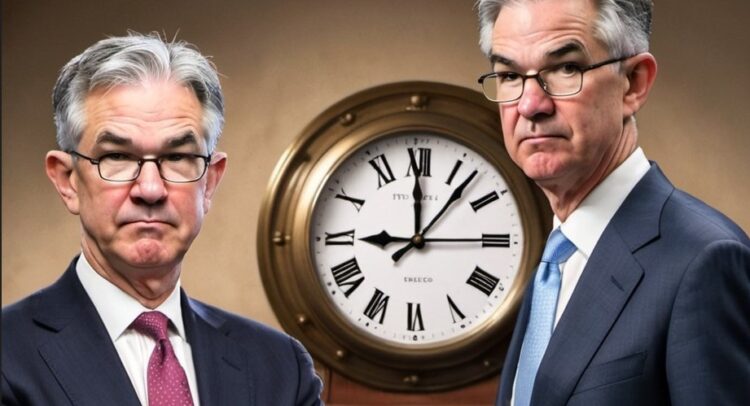Active investors pay close attention to every word uttered by Chair Jerome Powell after Fed monetary policy meetings. This helps them gauge what to expect from future Federal Open Market Committee (FOMC) moves. The hope is to use the information to better manage investment decisions.
Claim 70% Off TipRanks This Holiday Season
- Unlock hedge-fund level data and powerful investing tools for smarter, sharper decisions
- Stay ahead of the market with the latest news and analysis and maximize your portfolio's potential
The statement that followed the March 2024 Fed meeting and the later press conference provided very little certainty for investors. However, Fed Chair Powell’s press conference was chocked full of insight that shed more light onto the Fed’s monetary policy outlook, and what the policy-making committee expects.
A word of caution is necessary when considering the FOMC’s future policy moves. These decisions involve numerous inputs, where some values are known while most remain uncertain. For instance, the Fed is certain about the upcoming U.S. Presidential election, yet the election’s outcome is unpredictable. The economic policies of the winning candidate will eventually influence the Fed’s economic outlook.
Thus, the Fed Chair cannot definitively predict future actions due to the inherent uncertainty. Instead, the central bank must adapt to unfolding economic conditions and prepare for various scenarios by outlining potential responses to different outcomes.
Fed’s Approach
Fed Chair Powell has shed light that the Fed aims to approach the economy with patience, by prioritizing careful data-driven decision-making and avoiding abrupt policy changes that may lead to reversals. The Federal Reserve aims to instill confidence and stability in the market. This approach can result in a more predictable economic environment, potentially reducing uncertainties and promoting a sustainable economic outlook.
Following the recent meeting, there was no change in the interest rate policy as the FOMC voted to maintain the federal funds rate at 5.5%, consistent with the previous five meetings.
Looking ahead to the remainder of 2024, the Fed anticipates three 25-basis point reductions in the Fed Funds rate, reflecting a gradual easing of policy. A basis point represents 0.01% of a percentage point, equivalent to 0.25%.
Furthermore, Powell reiterated the Fed’s commitment to vigilantly combatting inflation. The Fed maintains an end-of-year inflation forecast of 2.4% (PCE), unchanged since December. By maintaining a stable inflation forecast and adjusting policies accordingly, the Fed aims to provide consistent and predictable monetary policies and support long-term economic stability.
Regarding employment, the Fed projects a relatively stable outlook, with a year-end unemployment rate projection of 4.0%, down from 4.1% estimated in December.
Lastly, the Fed has revised its U.S. economic growth forecast upward, anticipating a GDP growth rate of 2.1%. This signifies an acceleration from the previous forecast of 1.4% in December, reflecting the Fed’s positive outlook on economic expansion.
It seems that the Fed’s approach embodies a consistent and data-driven policy framework, which can help shape market expectations, influence investment decisions, and support overall economic stability and resilience.
What Investors Might Now Expect
In summary, the 0.7% higher 2024 GDP growth forecast signifies the Fed’s optimism about the future direction of the U.S. economy. This positive outlook has investors hopeful for growth exceeding previous expectations. However, the translation of this optimism into policy actions and tangible economic performance remains uncertain.
Anticipated gradual monetary policy easing, involving three small rate cuts throughout 2024, is on the horizon. While the Fed currently plans for a gradual easing approach, adjustments may occur in response to evolving economic conditions. Easing measures are expected to reduce borrowing costs, boost confidence, stimulate economic growth, and create a favorable environment for stock market strength.
















